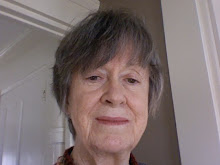Jesus tells us that the grain of wheat has to die before it springs to life. Of course he was telling us of his upcoming death and resurrection, but there is resurrection everywhere, if you just look for it.
I recently read about a date palm that rested for 2,000 years and now is growing. It comes from a date pit found in the rubble of Masada in Israel This is the oldest known seed to germinate. Scientists have looked at the sapling’s genetic fingerprint and have decided that it is probably a Judean date palm, a variety that is mentioned in the Bible and thought to be extinct.
They don’t know yet what a fully-grown 2,000-year-old Judean date palm looks like. But they do know from the Bible, from wall paintings from Mesopotamia and relics from Egyptian tombs, that Judean date palms once flourished in the Middle East. However, by the time of the crusades, these trees were no longer. The date trees now grown on Israeli farms come from trees originally imported from elsewhere in the Middle East and from California. For some people, the resurrection of a date pit buried for 2000 years symbolizes hope, and strength and life.
More than 120 years ago, on an island between the two major Indonesian islands of Java and Sumatra, the volcano Krakatoa erupted with an explosion ten thousand time the energy of the bomb that dropped on Hiroshima. Nearly 40,000 people died and its shock wave was felt around the world. Some nearby islands were buried in up to 130 feet of ash and there was no life left. The intense heat from the volcano wiped out wildlife, seeds and topsoil. Yet today, if you go there, you would find that nature has healed itself and the islands are green again. They stand as testimony to the hope of resurrection.
When the first expedition arrived in Krakatoa, just a few months after the eruption, no sign of life was found. Nine months later, scientists found just one spider, spinning a web. How did it get there? Like some plant seeds that are spread by the wind, many spiders spin a sail and can fly long distances on the wind. This one happened to land on solid ground rather than in the ocean, but it very likely starved, since there were no prey. And then six years after the eruption, scientists found spiders, flies, beetles, and butterflies as well as the pioneer specimens of the plant kingdom;, some of them made it there over the water, some of them in the stomachs of birds and some through the air. Within twenty years, there were trees over 40 feet tall draped in vines. Now there are more than 400 types of plants, in addition to many butterflies, birds, land mollusks, bats, and reptiles. Life has come back from the dead.
That is how nature repopulates itself. To feed our stomachs and our need for beauty, we tend to plant seeds. I have a basket full of seed packets here. Some of them are vegetables or herbs and, some flowers. Now the seeds in these packets are large or small. None of them are particularly pretty since seeds tend to be small and often wrinkly. But after seeds have lain in the ground and germinated, what comes out is fascinating. If we didn’t have a picture of what we were going to get, we couldn’t even imagine the beauty and wonder that would come from these homely little seeds, like beautiful flowers and all kinds of vegetables. Think about the stately hollyhocks, vibrant asters, bright tomatoes, peppers and sunflowers and fragrant marigolds. Where did they come from? All of them came out of seeds--small and homely seeds. Even though a seed is small and not particularly attractive, it has life in it. When the time comes and when it has been nourished with water and good soil, the beautiful and glorious body that God has given it comes forth. When the seed falls--and dies--God is transforming it to achieve its potential. Of course things can go wrong--weather might not cooperate, or we plant it in the wrong place or we might forget to water it, but the potential is there. What is true for seeds is true for us. But the problem is that we want to be servants of God without the sacrifice of dying to our old seed selves. We hope to flower without going through the step of sowing seeds. That is one way we reject the possibility of resurrection. There is a danger that we will remain only a single seed and will never experience God’s glory in our lives.
I picked up some packets of seeds this week. Some of them are vegetables or herbs and some are flowers. Some can be started indoors and some need to be put directly into the ground. There are annuals and perennials. I challenge you to select just one packet. Take it home. Read the instructions on how to plant it. It may be that the seed you chose can be started indoors and put into the ground after the danger of frost is over. It may be that you have to plant the seeds directly into the ground. Then I’d like you to consider how you could share your packet of seeds. Could you give a few to someone else? Could you share the abundance of your harvest with the food pantry or another person? Could you bring the flowers that you grow to put on the altar this summer? I’m not going to be around to see the harvest of your seeds. It is you who are here who can spread the seeds of resurrection.
Some of the seeds for the harvest have been around this place for a long time. Like the date pit from Masada, it may have taken years to find the right soil and conditions to germinate. Or like the seeds that repopulated the devastated islands of Krakatoa, even the harshness of past events is not enough to stop the seeds from taking root and flourishing. Resurrection is possible.
May God help each one of us to become seeds that fall to the ground and die so that we can experience God's resurrection in our lives and in our church as we grow into the people God calls us to become. Remember the picture of what we can be is already written on the package that is us.
Opinion – 24 December 2025
5 days ago







No comments:
Post a Comment